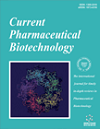-
s Changes in Expression Pattern of SEMA3F Depending on Endometrial Cancer Grade - Pilot Study
- Source: Current Pharmaceutical Biotechnology, Volume 20, Issue 9, Jul 2019, p. 727 - 732
-
- 01 Jul 2019
Abstract
Background: In the course of neoplastic diseases, a reduction in SEMA3F expression is observed, which translates into an increase in the proliferative and proangiogenic potential of cells forming the tumor and the surrounding microenvironment. Objective: The aim of this study was to determine the changes in SEMA3F level in endometrial cancer depending on its grade. Methods: The study material consisted of tissue samples: 15 without neoplastic changes (control group) and 45 with endometrial cancer (G1, 17; G2, 15; G3, 13; study group). SEMA3F expression was assessed using the immune-histochemical method. Results: The expression of SEMA3F was observed in the control group (Me = 159.38) and in the study group (G1, Me = 121.32; G2, Me = 0; G3, Me = 130.37). Differences between each grade and control and between individual grades were statistically significant. There were no significant correlations between SEMA3F expression and weight and Body Mass Index (BMI). The reduced SEMA3F expression in tumor tissue compared to healthy tissue indicates that this protein plays key roles in proliferation and angiogenesis. Conclusion: We found that depending on the severity of the disease, cancer adopts different survival strategies, where SEMA3F plays an important role. As a molecular marker, SEMA3F is not sensitive to weight and BMI.


